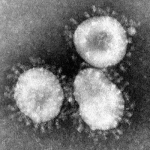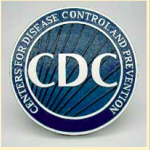New Jersey health officials' interpretation of CDC guidance is going to put smokers ahead of nonsmokers in the COVID vaccination program. Crazy? We think so.
CDC
This week, the CDC modified its definition of direct contact for COVID-19 from 15 continuous minutes to 15 accumulated minutes within a distance of six feet or less. Should we consider this change in definition as flip-flopping, "moving the goalposts,” or something else?
It's time for the Centers for Disease Control and Prevention to withdraw this page to correct its many errors and distortions. A principal author of the 2016 CDC Guidelines on the prescription of opioids to adults with chronic pain is responsible for many of these errors. Richard Lawhern (pictured) addressed these mistakes in this open letter.
Did you honestly believe that the CDC announcement six months ago – of a 4.1% decline in drug overdoses in 2018 – was a sign of progress in the so-called war on drugs? Of course, it was nothing of the sort. Just an exercise in tweaking numbers. ACSH advisor Dr. Jeff Singer tells us the real story.
Methamphetamine has made an unprecedented comeback, surpassing even fentanyl in drug overdose deaths in certain parts of the U.S. It hasn't shown up by accident; it's an offshoot of the misinformed anti-opioid movement. But it took two different government screwups to cause this latest mess: one that gave us pure, cheap meth and another that gave addicts the reason to use it. Nice going.
The World Health Organization does a tremendous job advancing the cause of global public health. But two recent, major screw-ups show that the institution is far from perfect. In one instance, a group of UK scientists accused the WHO of spreading "blatant misinformation."
If you're a government agency like the CDC, the best time to admit to a huge mistake is on Friday afternoon before a three-day weekend. And if you're a government agency like the FDA, there's never a good time to make a boneheaded decision.
Dr. Jeffrey Singer takes issue with a Cincinnati Enquirer article touting a recent CDC report of a 30% drop in opioid prescriptions in 2016-17, compared to 2010-11. Our ACSH advisor maintains that the restriction of the drugs has no impact on their misuse, but does force pain patients to use ineffective and dangerous alternatives. In other words, prohibition.
The US Centers for Disease Control recently released its new report, Antibiotic Resistant Threats in the United States, 2019. ACSH Advisor Dr. David Shlaes discusses its pros and cons.
The denial of prescription analgesic medication to chronic pain patients has caused unnecessary suffering. But it has also driven up the suicide rate, trapping those who cannot bear to live without the drugs that have kept them functioning for years. ACSH advisor Red Lawhern, Ph.D., discusses the tragedy of intolerable pain.
While an investigation is underway into the exact nature of the problem, so far the likeliest explanation is that improper use of vaping devices has led to illness, or the death, of some users. But that sort of nuance isn't governing the thinking of the FDA or CDC officials, both of which are allowing myths and fearmongering to drive their policies and public statements.
The CDC just released "Provisional Drug Overdose Death Counts," which seems to imply that opioid overdose deaths are falling for the first time. Some will doubtlessly take credit for ending the opioid crisis. But they shouldn't.









